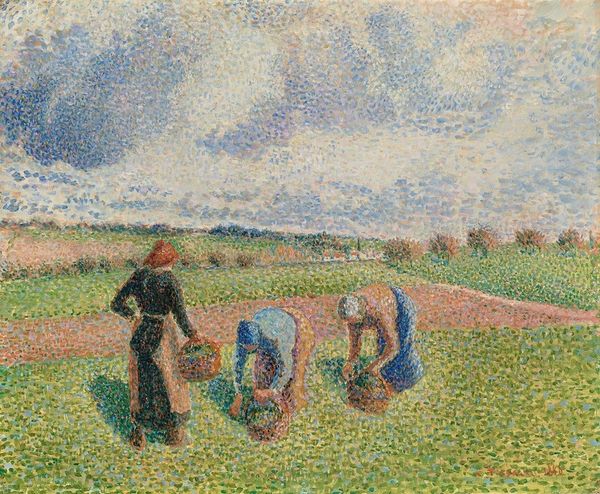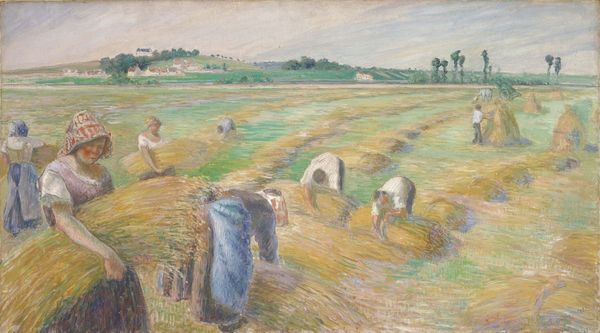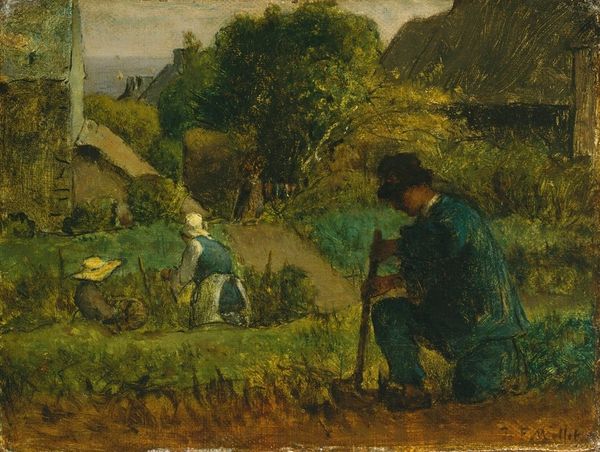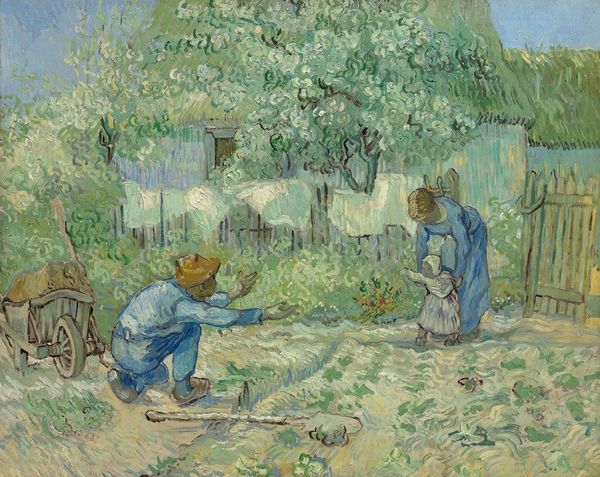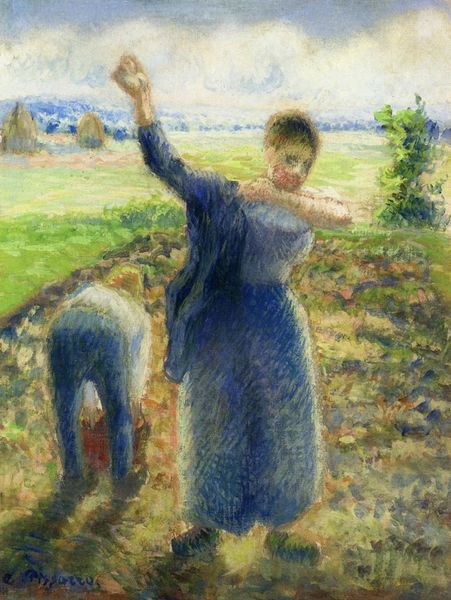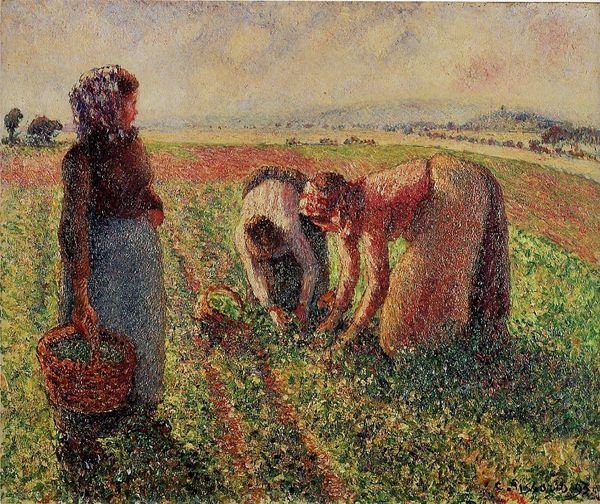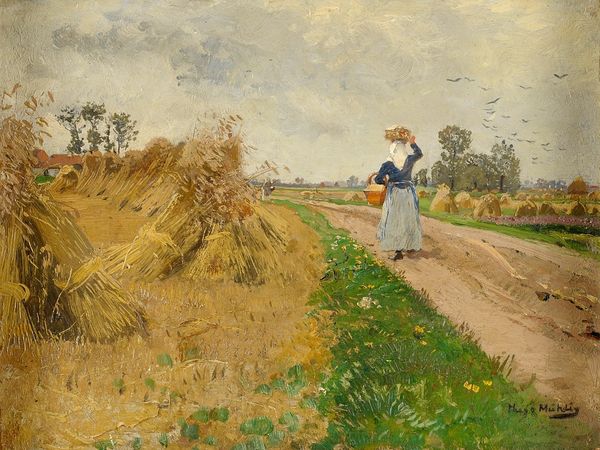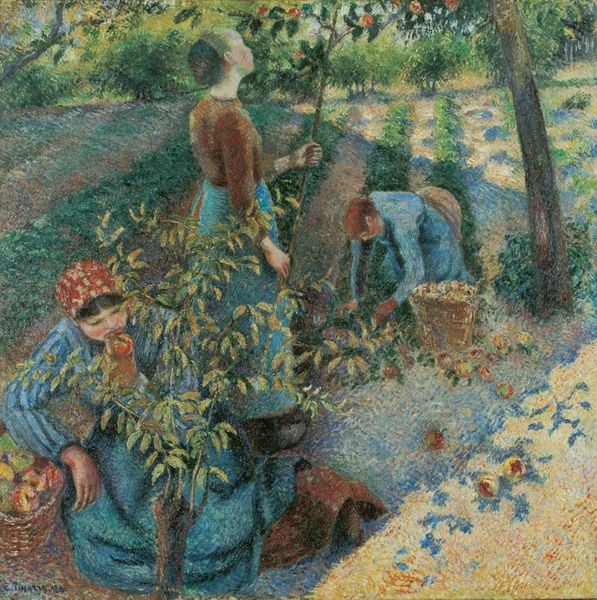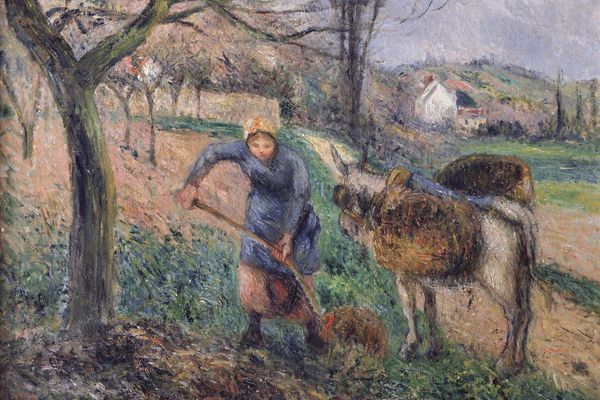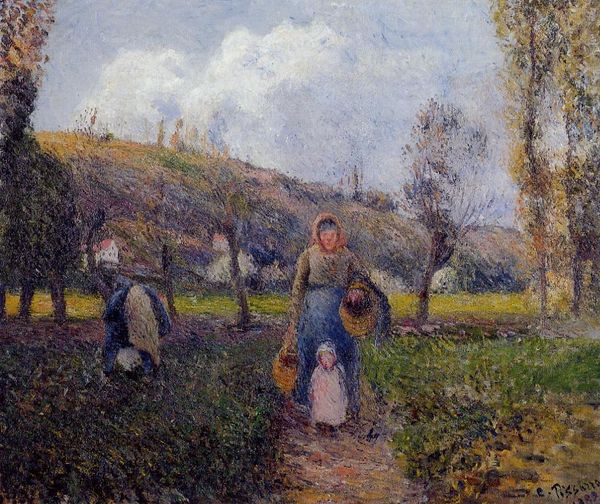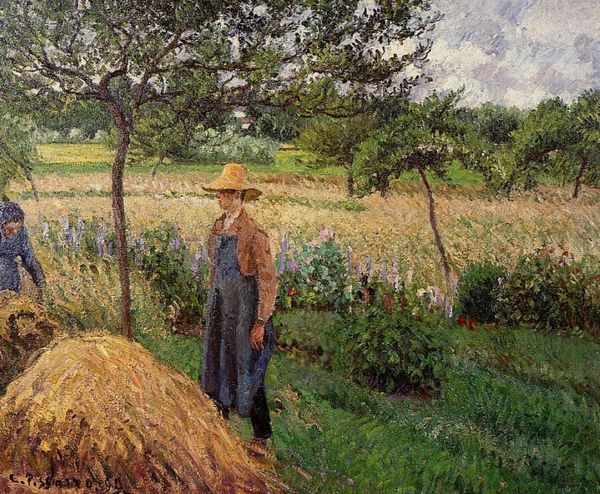
painting, plein-air, pastel
#
figurative
#
painting
#
impressionism
#
plein-air
#
landscape
#
figuration
#
oil painting
#
coloured pencil
#
genre-painting
#
pastel
#
watercolor
Copyright: Public Domain: Artvee
Curator: Okay, let's discuss this piece. What catches your eye right away about Camille Pissarro's "La Recolte," or "The Harvest," completed in 1880? Editor: Immediately, it's this hazy, almost dreamlike quality. The pastel colors give it a gentle warmth, but there's a kind of faded sadness to it, like a memory. The gold of the field blends into a melancholic tone. Does that resonate historically? Curator: It's insightful you notice the subdued mood. Pissarro, although a founding figure of Impressionism, was also deeply invested in depicting the lives of rural workers. The Impressionists weren't necessarily always about cheerful escapism. There's often an undercurrent of social observation in their work. Paintings like "The Harvest" reflect the artist's engagement with rural life and labor. These paintings are visual testaments, almost social documents. Editor: Documents painted in a wash of poetic feeling, mind you. Look at the way the figures blend into the landscape! They become part of the field itself. But, what stories do these brushstrokes tell? I am mostly feeling an air of nostalgia... Curator: Precisely. Pissarro aimed to show the dignity of these people, rooted in their work. We must remember that the late 19th century was a time of rapid industrialization and rural workers leaving to become an industrial proletariate. These images were created with those shifts in mind and contributed to debates of that era. Editor: So, more than just golden fields, it is kind of socio-political statement on canvas, perhaps? All wrapped in that pastel sadness? Now I'm feeling it... there is tension within the idyll! Curator: Absolutely. Art is rarely just about what it seems to be "on the surface." Art, as Pissarro well knew, has something to say. The beauty we find can and often is deeply informed by the historical forces around it. Editor: The art always captures more than just the present—it anticipates the future, maybe reveals the invisible wounds beneath what history sometimes paints as mere nostalgia. Seeing Pissarro’s vision reframes my perspective; even harvest season bears different fruits when approached through art’s unique vision.
Comments
No comments
Be the first to comment and join the conversation on the ultimate creative platform.
